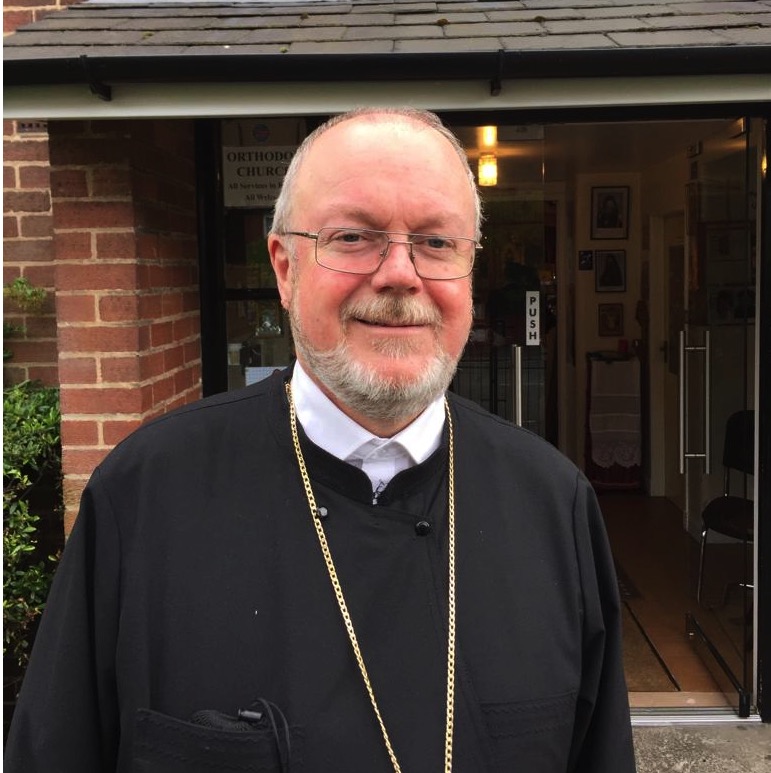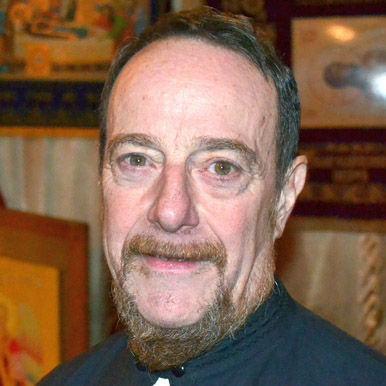Let us consider this feast, which shows the power of God and the eternal nature of Christ, who appeared with Moses and Elias to Peter, James and John. This is shown in Holy Tradition and I will look at just a few examples.
The icon of today’s feast is dramatic; it shows Christ in glory with Moses and Elias and with the Apostles below in terror and awe, surely a reasonable response to such power. We know that the Father was heard from the cloud confirming His pleasure in the Son. To call it a drama is not to belittle the event. Good drama deals with truth and this revelation was to encourage the Apostles in what was to come. Christ, like any good teacher, showed rather than just told the truth. Years later St Peter referred to it in his second letter, read as the Epistle today: “We did not follow cleverly devised stories when we told you about the coming of our Lord Jesus Christ in power, but we were eye-witnesses of His majesty. He received honour and glory from God the Father when the voice came to him from the Majestic Glory, saying, ‘This is my Son, whom I love; with him I am well pleased.’ We ourselves heard this voice that came from heaven when we were with Him on the sacred mountain.” (2 Peter 1:16f). St Peter reminded his readers that Christ is God and that we need to show due diligence in working out our salvation.
Christ showed His eternal divinity. In the words of St Gregory Palamas: “We believe that at the Transfiguration He manifested not some other sort of light, but only that which was concealed beneath His fleshly exterior. This Light was the Light of the Divine Nature, and as such, it was uncreated and divine. So also, in the teachings of the Fathers, Jesus Christ was transfigured on the Mount, not taking upon Himself something new nor being changed into something new, nor something which formerly He did not possess. Rather, it was to show His disciples that which He already was, opening their eyes and bringing them from blindness to sight.” (St Gregory Palamas: Homily on the Transfiguration).
All this fits a pattern going back into the Old Testament. Our Holy Fathers established the readings for this feast and those appointed for Vespers include accounts of revelations to Moses and Elias. Both met Christ Himself, who said: “No one has seen the Father except the one who is from God; only He has seen the Father.” (John 6:46).
It follows that Christ met Elias. We read of it in 3 Kingdoms (1 Kings) 19:3F. There was wind, fire, an earthquake and a still small voice which was God speaking.
Christ appeared to Moses in the bush with the flames: “There the angel of the LORD appeared to him in flames of fire from within a bush. Moses saw that, though the bush was on fire, it did not burn up. So Moses thought, ‘I will go over and see this strange sight – why the bush does not burn up.’ When the LORD saw that he had gone over to look, God called to him from within the bush, ‘Moses! Moses!’ …Then He said: ‘I am the God of your fathers, the God of Abraham, the God of Isaac and the God of Jacob.’” (Exodus 3:2f). In Church Tradition the Lord, God and Angel are used as titles for Christ talking from the bush. Angel means messenger, and Christ was, and is, not only God but also the messenger from the Father as His Word. St Justin Martyr explained that Christ was: “God, and the Angel because He ministered to [the Father’s] will.” (Justin Martyr Dialogue Chapter 127). Furthermore the prophecy of Isaiah about the birth of Christ says, in the Septuagint translation: “For a child is born to us, and a son is given to us, whose government is upon his shoulder: and his name is called the Angel of Great Counsel”. (Isaiah 9:6).
Christ appeared to Moses again on Sinai, for instance in Exodus 24, which recorded that a cloud came over the mountain. This was the Shekinah, a name derived from Hebrew, meaning the presence of God. There is a parallel in the cloud which concealed the Father and into which Christ is caught up at the Transfiguration. Christ was seen, but not the Father.
We know God because He has shown us Himself in Christ, including His pre-incarnation appearances in the Old Testament.
Why were Moses and Elias present? They showed a direct link to the earlier revelations of Christ to them when they were on earth. Also one died and the other was bodily taken into Heaven. This is fitting as Christ is ruler of both the living and the dead, as the services point out (referring to Romans 14:9). St John Chrysostom said that they were also there as example: “Each of these, having lost his life, found it. For each of them spoke boldly unto tyrants, Moses to the Egyptian, Elias to Ahab.” (St John Chrysostom, Homilies on St Matthew’s Gospel, 56).
Likewise why were St Peter, St James and St John present and not all the Apostles? St John Chrysostom answers: “Because these were superior to the rest. And Peter indeed showed his superiority by exceedingly loving Him; but John by being exceedingly loved of Him; and James again by his answer which he answered with his brother, saying, ‘We are able to drink the cup’; nor yet by his answer alone, but also by his works.” (St John Chrysostom Homily 56 on Matthew). It follows that Christ chose these particular Apostles because of their special love for Him. Possibly the others were not yet ready to see such a vision. Christ did not show His full majesty to crowds, nor even to all the Apostles. St Gregory Palamas reminds us that: “This power is not manifest to simply ordinary people, but to those standing with the Lord, that is to say, those who have affirmed their faith in Him like Peter, James and John, and especially those who are free of our natural abasement.” (St Gregory Palamas, Homily 34 on the Transfiguration). We, too, should stand with Christ and show our faith.
Christ is not just a friend who loves us more than we can comprehend. We shall shortly take Him into ourselves in Holy Communion and He dwells in us through the power of the Holy Spirit. But let us never forget that He is the all-powerful God and that He reveals Himself to those who love Him to such a degree as we can bear. In due time we shall all see Him in the fullness of His glory. We cannot prepare for that purely by our own efforts; we need the help of Christ and the power of the Holy Spirit. We need to be open to Christ and allow Him to work on us and in us. To love Him is to obey and to seek His will. That demands diligence and prayer and is the path to Theosis, Deification. It is what we are all called to and we have the example of the saints who have shown the Uncreated Light of God. Let us, then, respond to Christ with true worship and with obedient love.

 Archpriest Gregory Hallam
Archpriest Gregory Hallam
 Fr. Emmanuel Kahn
Fr. Emmanuel Kahn